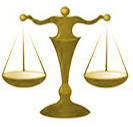Basic principles of negligence involving claims for personal injury
So many people who are injured wonder if they have a case. There is no blanket answer to this question, as each case is fact specific, and it is important to speak to a lawyer.
In New York State, we have a large body of law that has developed over time to answers many of these personal injury or medical malpractice fact scenarios. But let’s see if we can carve out some basic principles involving the negligence of one part to another.
A person who wants to sue for a claim involving negligence against a person, company, or municipality needs to show first:
1. They were owed a duty of care
2. There was a breach of a duty of care
3. Then there has to be actual or what is termed proximate cause
Describing this in general terms is not easy, but let’s break it down one step at a time
Point one raises the issue (think of the issue as a short question) whether there was a duty of care? This is often judged by a reasonableness standard.
- What would a reasonable person have done in the case?
- Was there an appropriate exercise of caution (and this next part is key), against a foreseeable person?
In simple terms, was this person injured someone who it was foreseeable could or would be injured. If so, then there is probably liability. Liability means fault, and when this fault causes injury then we have a breach of a duty of care to a foreseeable person. Now you are starting to think like an attorney.
Also there has to be actual cause which is self explanatory
For example most directly the person caused and created the condition. Now this does not have to be intentional but for example, may be a construction defect. If someone intentionally did something wrong there is a greater probability of actual fault. This may not be negligence and this could be criminal, and unless you are going after a large corporation you may find that for a criminal act the insurance company will deny coverage.
Another important aspect of actual or proximate cause is notice of the fact that caused the personal injury
Did the person or entity to be sued have personal knowledge of the condition that caused the injury? And if not did they have constructive notice, which can mean that the condition existed for such a long period of time that a proper inspection would have revealed the condition or it was apparent to those who manage or work at the facility so that this may be found by the Court to have constructive notice. It is for the Court to determine these issues.
Proximate cause is defined as nearest cause
This deals with a chain of events or when there are multiple causes for an injury. As you can see, facts drive the law, not the other way around. People and facts happen first, then the law comes into play. The law sets the parameters, and the facts fit into a category of cases that have largely defined many cases we lawyers come across.
But judges are making decisions on new facts relative to that law all the time
This is only a brief overview, and it takes years of understanding to fully know how much of the law can be related to your case.
Consult a lawyer for a professional opinion, and do not decide on your own if you have a case, as this brief blog is not a formal legal opinion.
For a free consultation, contact the office of Personal Injury Attorney Manuel Moses, Esq. 236 West 26th Street Suite 303, New York, New York 10001. (212) 736-2624 Extension 11.
Nothing in this blog is intended to be formal legal advice you are urged to consult a qualified attorney for guidance of your construction accident or personal injury case.
